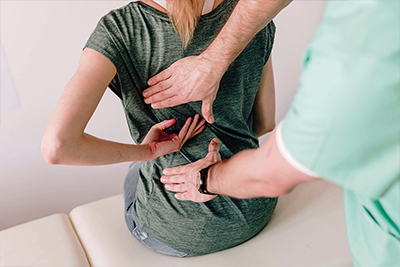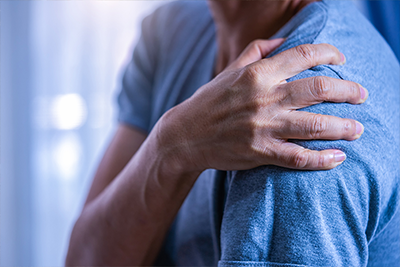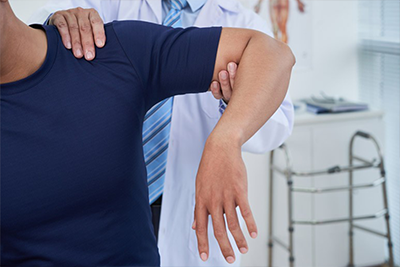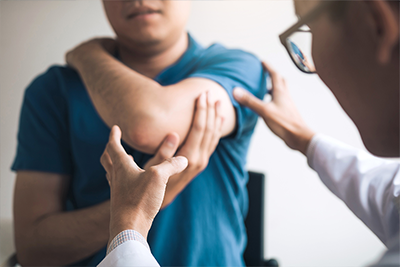We’re happy to announce that Vale Health Clinic will now be offering Low Level Laser Therapy (LLLT). LLLT is an extremely safe treatment that painlessly treats a massive range of conditions such as osteoarthritis, strains/sprains of tendons or muscles, post operative pain and tissue damage.
LLLT uses LED light beams that stimulate and repair damaged tissue and in turn, reduce inflammation and pain to the applied area. The treatment has been shown to stimulate the production of adenosine triphosphate which is where cells get their fuel. This gives our cells more energy and leads to them being able to heal and repair themselves.
Here at the Tunbridge Wells Chiropractic, we are working with Thor Lasers to ensure we offer the best treatment available when it comes to Low Level Laser Therapy. Thor Lasers have been used by many organisations such as NASA, The British Army and even many football clubs such as Manchester United.
What is Low Level Laser Treatment?
Low Level Laser Therapy has been proven to be an extremely safe and effective way of treating many acute injuries and chronic pain. It’s a great option of treatment for people suffering with Chronic back/neck pain, plantar fasciitis, arthritis and other muscle and joint pains. It’s a great way to accelerate the healing of injuries without the use of medication.
The treatment involves using red and near infra-red light on the injury. The laser/LED light stimulates your cells that repair tissue and reduce inflammation which reduces pain without the need for any pain killers.
Low Level Laser Therapy is a great treatment for people suffering with acute soft tissue injuries, chronic pain and slow healing wounds.
Therapeutic Benefits Of Laser Therapy
- Anti-Inflammatory Action – Reduces swelling which leads to decreased pain and less stiffness.
- Reduced Fibrous Tissue Formation – Reduces the formation of scar tissue, leading to a faster and more complete healing process with less chance of weakness and re-injury.
- Increased Vascular Activity – Laser light increases blood flow to the injured area.
- Faster Wound Healing – The laser stimulates fibroblast development and helps to accelerate collagen synthesis in damaged tissue.
- Stimulated Nerve Function – The laser speeds the nerve cell processes which can lower pain and numbness associated with some nerve related conditions.
- Rapid Cell Repair – Laser light accelerates cellular reproduction
Conditions treated using laser therapy
- Sprains and Strain (Acute soft tissue injuries
- Burns
- Ulcers
- Fractures and non union fractures.
- Neck/Back Pain
- Post operative pain, Infected wounds and tendon repair.
- Chronic Pain Syndromes such as Frozen Shoulder, RSI and chronic low back pain.
- Nerve Pain
- Osteoarthritis
Advantages of Low Level Laser Therapy over Medical Treatment
LLLT can be used straight away after injury and has no side effects. (you may occasionally experience mild ache after treatment.). An amazing drug free pain relief option.
Frequency of Treatments
- Some patients feel results within the first session, some patients it takes between 4-6 sessions.
- The more complex the issue, the more treatment you will need.
- Frequency of treatment is 1-2 times a week for 2-4 weeks and then 1 time per week for a further 2-6 weeks.
In summary
Using Low Level Laser Therapy will significantly increase your healing time and will also reduce pain in the process. This will lead to getting you back to your normal day to day life as soon as possible. It’s an amazing alternative to pain medication which can leave you with some nasty side effects.
Advantages Of Low Intensity Laser Therapy.
- 100% SafeEasily Applied
- Non-Toxic
- Non-Invasive
- Highly Effective
- No negative side effects
Related Articles
- Treatment of Plantar Fasciitis using Shockwave Therapy
- Can Sports Massage Help Tendonitis?
- How Chiropractors Treat an ACL Tear
- Pills Are Not Always Necessary
- Stiff Neck? No Wonder!




























